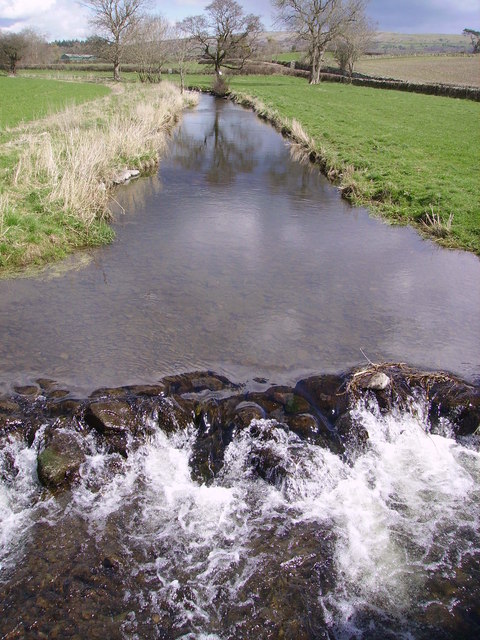River Eea on:
[Wikipedia]
[Google]
[Amazon]
 The River Eea () is a small
The River Eea () is a small
see Wiktionary s.v. "ea".
/ref>
 The River Eea () is a small
The River Eea () is a small river
A river is a natural stream of fresh water that flows on land or inside Subterranean river, caves towards another body of water at a lower elevation, such as an ocean, lake, or another river. A river may run dry before reaching the end of ...
in the Lake District
The Lake District, also known as ''the Lakes'' or ''Lakeland'', is a mountainous region and National parks of the United Kingdom, national park in Cumbria, North West England. It is famous for its landscape, including its lakes, coast, and mou ...
, Cumbria
Cumbria ( ) is a ceremonial county in North West England. It borders the Scottish council areas of Dumfries and Galloway and Scottish Borders to the north, Northumberland and County Durham to the east, North Yorkshire to the south-east, Lancash ...
, England running through the Furness
Furness ( ) is a peninsula and region of Cumbria, England. Together with the Cartmel Peninsula it forms North Lonsdale, Historic counties of England, historically an exclave of Lancashire. On 1 April 2023 it became part of the new unitary author ...
region, which until 1974 was part of Lancashire
Lancashire ( , ; abbreviated ''Lancs'') is a ceremonial county in North West England. It is bordered by Cumbria to the north, North Yorkshire and West Yorkshire to the east, Greater Manchester and Merseyside to the south, and the Irish Sea to ...
. It is a relatively short system that arises from numerous small becks and streams throughout the Cartmel Valley. Its course is approximately 10 km long and its mouth is on Sand Gate marshes near Flookburgh, between Barrow and Kendal. It principally flows in a south-westerly direction.
Geography
The river's source is a spring in the hills, meaning it flows all year round. Its upper course is called Whitestone Beck. The river's main tributaries are Muddypool and Ayside Beck, which converge aboveCartmel
Cartmel is a village in Furness (traditionally "Lancashire-over-the-Sands" (and in the ceremonial county of Cumbria), England, northwest of Grange-over-Sands close to the River Eea. The village takes its name from the Cartmel Peninsula, a ...
.
The river rises near High Cark in Newton Fell and the Whitestone Enclosure, and is soon fed by ''Black Beck'' (emanating from Fair Rigg south of Staveley-in-Cartmel) and ''Ayside Pool'' (rising above Ayside).
From there, the River Eea runs past Green Bank and through Cartmel and Cark
Cark (sometimes Cark in Cartmel) is a village in Cumbria, England. It lies on the B5278 road to Haverthwaite (and to the A590 road) and is ½ mile north of Flookburgh, 2 miles southwest of Cartmel and 3 miles west of Grange-over-Sands.
It is ...
before flowing via Sand Gate Marsh
In ecology, a marsh is a wetland that is dominated by herbaceous plants rather than by woody plants.Keddy, P.A. 2010. Wetland Ecology: Principles and Conservation (2nd edition). Cambridge University Press, Cambridge, UK. 497 p More in genera ...
into the estuary
An estuary is a partially enclosed coastal body of brackish water with one or more rivers or streams flowing into it, and with a free connection to the open sea. Estuaries form a transition zone between river environments and maritime enviro ...
of the River Leven at Lenibrick Point, close to Chapel Island. The section above Cark has been re-routed to serve as a water supply to Cark Mill, and there is a branch serving a farm near the railway station. The original use was to drive a water wheel at the cotton mill, but about 1800 a steam engine was added to pump water back up to the upper leat to redouble the supply. The Engine Inn in Cark was named from this local detail. The river is now used as a fieldwork study point for the Castle Head Field Studies Centre where students can measure variables of the river such as the stream velocity, width, depth, turbidity, pebble roundedness, sinuosity etc.
The name may be derived from plenty of eels gathering in its lower course during high tides ("eea" was a Viking word for eel), or from the Old Cumbrian "ia" (ice), or the Old English "ēa" (a river)./ref>
Geology
To the west of the catchment area the rock is mainly slate, but to the east there are deposits of limestone. Sinkholes in the limestone can cause the river to disappear for some time.Fishing
The river is stocked withbrown trout
The brown trout (''Salmo trutta'') is a species of salmonid ray-finned fish and the most widely distributed species of the genus ''Salmo'', endemic to most of Europe, West Asia and parts of North Africa, and has been widely introduced globally ...
, but wild brown and sea trout are also found and fished from the river.
References
{{authority control Eea History of Lancashire Eea 1Eea